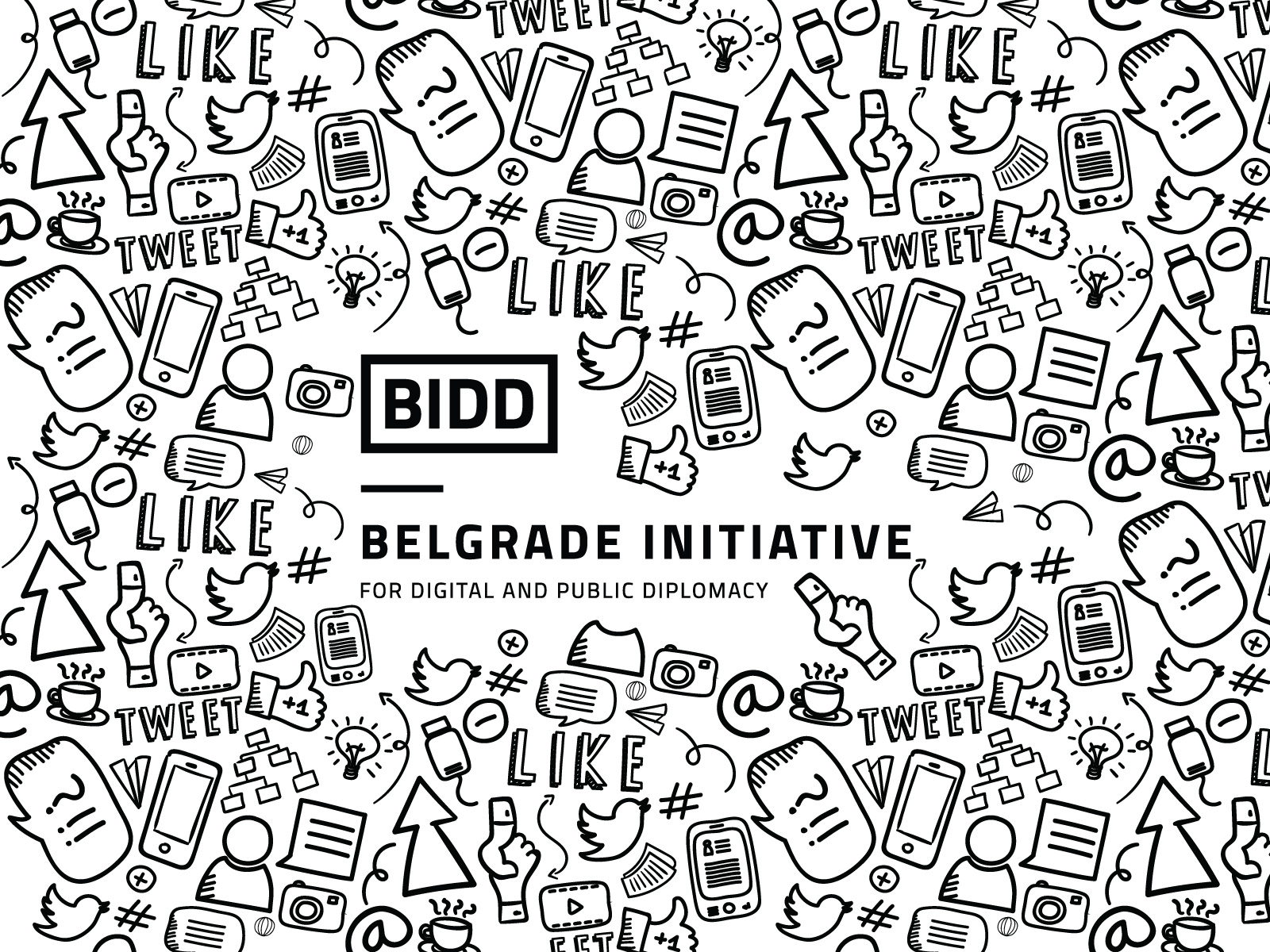![]()
The newspapers are packed with front page, head line stories of Prime Minister’s recent and successful visit to the West Coast of United States, where he professed his firm belief in ‘social media’ as the apt medium of the hour to connect people, build communities, local and global. While he booted up the dream of ‘Digital India’ in the high profile Silicon Valley show, all world leaders were urged to use social media, and micro-blogging sites to lend the ‘personal touch’ to an otherwise impersonal phenomenon of international diplomacy. Mark Zuckerberg also gives his blessings with the promise of ‘internet.org’ and welcomes the move of using social media as a means of governance. The ‘Digital Drive’ driving the dream of a ‘Digital India’ clearly isn’t only hinging on economic or political motives, as many would tell but also cultural ones, the larger purpose of striking chords with the local communities and diasporas by extending the hand of the land to enhance the sense of ‘belongingness’. Thus, it calls for a deeper and sensitive understanding of the dynamics of digital diplomacy as a social phenomenon, which uses ‘publicity’ as a method for change management and a re-evaluation of the conventional understandings of ‘public’, ‘public sphere’ and the process of ‘publicity’.
‘Diplomacy’ is by definition a social phenomenon for change management which involves a kind of conduct between the actors, where each access the evolving power dynamics in the interaction to effectuate the engagement as a success, assess the aspirations of the ‘other’ in the contextual circumstance, judiciously interpret the limits to one’s capacity to adapt to change and actively enlist the support of others in promoting or resisting change (Bjola, 2015)
Publicity then would be a method as much as a social phenomenon, a method for change management, constituting of shifting modes of sending and receiving messages, which operates in each frame with a code of operation between the actors. This code would effectively execute the chain of action and reaction for two features built into it – It doesn’t stand rigid but is shaped and reshaped under the influence of factors in the social structure calibrating the power flows in its mechanistic forms and the code is formulated in a dialectic of ‘discursive consciousness’, a dialogic practice where actors explicate their own interests and in turn come to know about the self through the interactions with the other and the collective.
 Calibration of power flows between both or more parties are carried out in mechanisms which are articulated in certain forms. These forms lend the changing and plural ways of practicing diplomacy. The practices are plural but aim to realise the main functional role of ‘diplomacy’ which is to steer change as per the social milieu. ‘Diplomacy’ thus, in its varied and transforming practices, is presented as an operational device to manage change but at the core, its aim as a method is to facilitate a mode of understanding and engagement that recognizes plurality of human existence and yet functions of the principle of the axiomatic divide between the ‘governed’ and the ‘governing’ bodies.
Calibration of power flows between both or more parties are carried out in mechanisms which are articulated in certain forms. These forms lend the changing and plural ways of practicing diplomacy. The practices are plural but aim to realise the main functional role of ‘diplomacy’ which is to steer change as per the social milieu. ‘Diplomacy’ thus, in its varied and transforming practices, is presented as an operational device to manage change but at the core, its aim as a method is to facilitate a mode of understanding and engagement that recognizes plurality of human existence and yet functions of the principle of the axiomatic divide between the ‘governed’ and the ‘governing’ bodies.
The transformation here would indicate a response to the change of the social milieu, and thus a new mode of interaction between the governed and the governing. Transitions incorporate new elements in assimilation, reshaping traditional diplomatic functions of representation, communication and negotiation, which in turn alter the status of the diplomat (Hocking et. al 20I2) and thus the institution of diplomacy. Thus by altering the conventional patterns of diplomatic interaction and introductory new meanings, perspectives and meanings of what counts as conflict and cooperation in global affairs and the transformation of status of the diplomats have tremendous influence on distribution of relations of power in the political structure. Thus we can conclusively see that the category of ‘diplomacy’ and ‘diplomatic practices’ as an element shaping the social structure emerge and transform not prior to actors’ interactions but through engagements. In this mode of ‘institutional digital diplomacy’, political actors insert themselves into the ‘digital culture’ and adapt themselves to the ‘social media age’ thereby using the form represent, communicate and relate to the ‘masses’ in a transformed relation effectuating certain ends. Rather than looking at the conceptual genealogy of the term, we would understand the ‘public sphere’ and the ‘public image’ in the ways these concepts manifest in the social, representation process of ‘digital diplomacy’ and the dominance of this trend in being the most effective channel of influence between the political interest party and the ‘public’.
Habermas, ends on a ominous note in regard to the‘re-feudalistaion’ of the Public Sphere , the blurring of boundaries between the state and the society where the State encroaches into the private and the private collapses into itself. Features of the sphere, like rational critical debates were replaced by leisure and world of media gaining a different kind of currency of circulation , ‘cheap and powerful’ becomes a mechanism to create ‘publics’ where none existed in persons and manufacture consensus. Clearly, he is indicating the changing nature, role and function of the public sphere. What is interesting and relevant about his work in today’s time could be the acute understanding of the ‘public sphere’ as a virtual or imaginary community which does not necessarily exist in any identifiable space and the characterization of the ‘spectator’, not as passive recipients of information like in the Feudal age, but active consumers of messages, which are then acted upon.
Here, then the Public Image would be less of an object, stripped of life, but a semantic field, which provides a modality for communication, enabling enframing of the spectator in the way one looks at the image (the image pulls the viewer into it). The image isn’t a sacred entity whose ownership is monopolised but the success of the ‘public image’ is hinged on two tenants – firstly the circularity of the image and at the same time, the authority that the image demands by virtue of who it represents. If one adds one and one, collating both these forces, we have the creation of a meta-culture. What speaks from the public image is the ‘public figure’, a monolithic entity constructed out of a process of selective attribution and translations within different frames of references. The attribution of values and qualities ascribed onto the construct of this ‘figure’ translates into the consummation of ‘promises’ by the masses. These promises are hinged on the currency that this ‘figure’ demands and at the same time are deferred, a happiness, sense of prosperity, and progress, a movement, whose teleology is pre-determined, supposed but not realised, pleasure as a form of reassurance, not for its own sake but for the sake of ‘national’ interests. So here we have a narrative that is built around an imagined trope of the ‘nation’, a sense of belonging to an entity actualised, but constituted by that very imagination ‘the monolith’ of ‘we’. Here the genealogy of this monolith is constituted craftily by myths which is further used to collate with the ‘image’ of the ‘public figure’, the man himself being assigned a certain ‘role’ – to manufacture the promise of a ‘golden future’. As a last point I’d draw the attention to the caption along with the pictorial image – The role of the ‘caption’ is arranged to suit an exact pictorial correspondence establishing the dialogue with the public.
The idea of the age of pictorial representation is centred about this embodiment and disembodiment of meanings and its transformation in different contexts. What transpires as a result is the making of ‘sense’ which is always in the ‘making’, a result and effect, a language effect, a positional effect, optical effect. The reproduction is about the facilitation of ‘circulation’, images by virtue of them being circulated have destroyed the authority of ownership yet draw their currency from the authority of the construct (‘public figure’)
Priyanka Dass Saharia, Graduated from St. Stephen’s College (Economics) and Delhi School of Economics (Sociology)
http://www.countercurrents.org/saharia031015.htm













